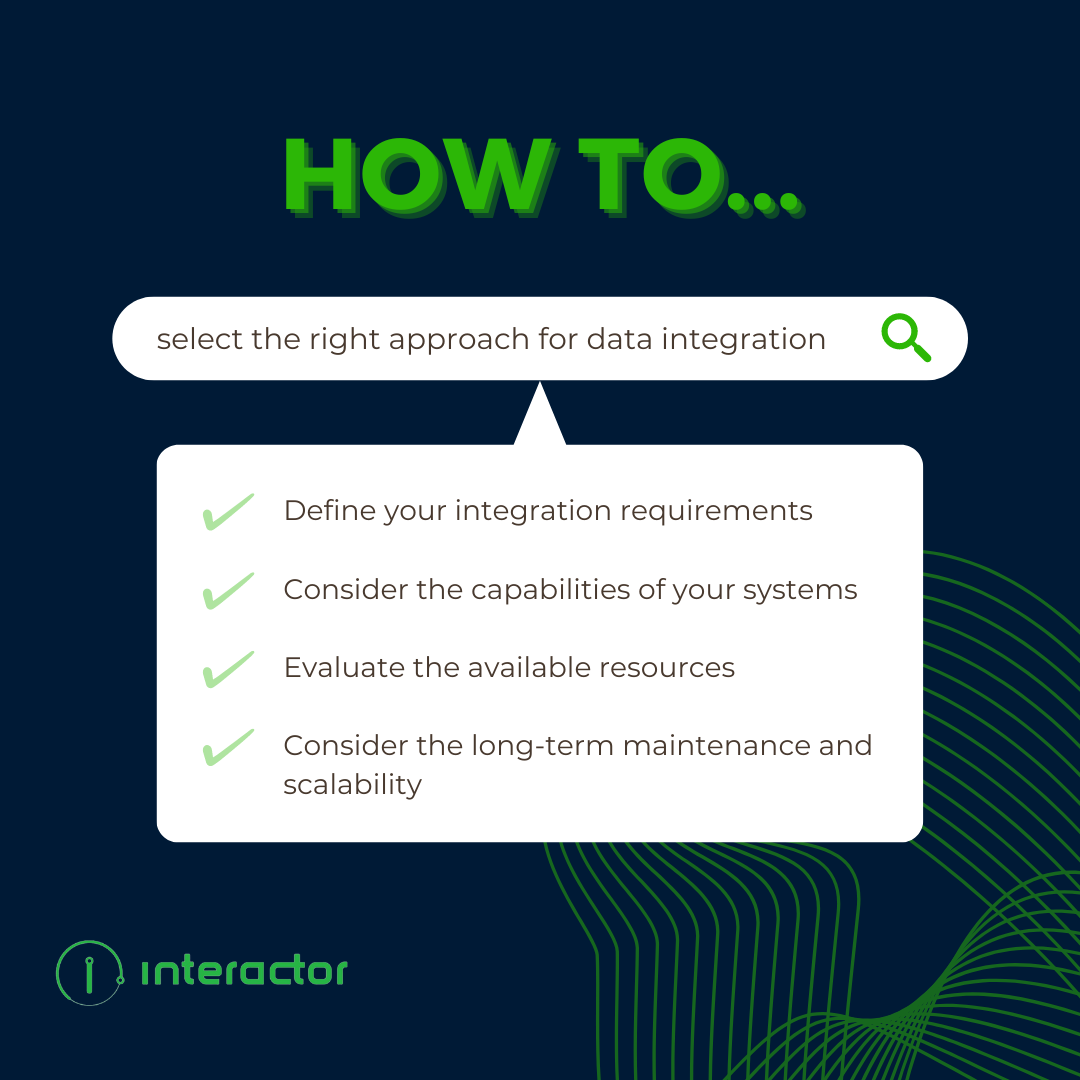How To Choose The Data Integration Method That Actually Works
Data integration is a crucial aspect of modern business operations, but with so many different methods to choose from, it can be challenging to know which one is right for you. This blog will explore the different data integration methods available and help you determine which is best suited for your organization's needs.
We'll start by looking at the different types of data integration, including real-time and batch integration, and the various approaches, such as point-to-point integration, ETL, ELT, EAI, and data warehousing. We'll also consider some key factors that can impact your decision, such as the types of data sources you're working with, your integration requirements, the capabilities of your destination system, and your available resources.
Most commonly used data integration approaches
There are many ways data can be integrated. The below five are the most commonly used approaches that you should consider:
- P2P (Point-to-point integration) is a type of data integration in which two systems connect directly using APIs or other methods. This allows the systems to exchange data in real-time or at predetermined intervals, depending on the organization's specific requirements.
- ETL (Extract, Transform, and Load) is a process for extracting data from one or more sources, transforming it into a format suitable for the destination system, and loading it into that system. ETL is commonly used for transferring data from transactional systems, such as databases, to a data warehouse or other data repository.
- ELT (Extract, Load, and Transform) is a variation of the ETL process in which the data is first loaded into the destination system and then transformed as needed. This approach can be more efficient when the destination system performs the transformation steps, as it avoids transferring the data through intermediate systems or stages.
- EAI (Enterprise application integration) is a type of data integration involving specialized software to integrate multiple systems and applications within an organization. EAI typically consists of creating a central hub or "integration platform" that connects the various systems and applications and enables them to exchange data and functionality.
- Data warehousing: Data warehousing involves creating a central repository of data from various sources, which can then be queried and analyzed to gain insights and make informed decisions.

How to select the right data integration approach
There’s no right or wrong answer when selecting a data integration approach. The selection boils down to how you want to integrate and handle the data. Below are some of the things to consider when selecting the right data integration approach for your organization:
- Define your integration requirements: Start by clearly defining your data integration requirements, including the types of data you need to integrate, the volume and frequency of data transfers, and the level of complexity involved. This will help you narrow down the options and identify the most suitable approaches for your needs.
Example: Do you want to process the data before storing it? You will need to select the ETL approach. - Consider the capabilities of your systems: Evaluate the capabilities of the systems you need to integrate, including the types of data sources and formats they support, their transformation and analysis capabilities, and any constraints or limitations. This will help you choose an approach that is compatible with your systems and can leverage their strengths.
Example: Some systems cannot handle frequent requests, so you must take the batch or data warehousing approach where you pull the data first. - Evaluate the available resources: Consider the resources available for data integration, including technical skills, budget, and time. This will help you determine whether you have the necessary expertise and resources to implement a particular approach or if you need to look for a more straightforward or cost-effective solution.
Example: Your team may be tied with other projects where data integration is not the highest priority. - Consider the long-term maintenance and scalability: Think about the long-term maintenance and scalability of the data integration approach you choose. A complex solution may offer more capabilities, but it may also require more resources to maintain and may not be as scalable as a simpler solution.
Data is constantly changing, and there needs to be a way to adapt quickly to the changes.
Traditional methods are difficult as data integrations rely heavily on development teams to create the integration application and keep things updated. With the rise of no-code platforms, the operation and business teams can take charge of the data and fulfill the business needs with the right integration setup.
Real-time vs. Batch integration
Modern digital transformation, in most cases, requires real-time data integration. But that doesn’t mean batch data integration is obsolete.
- Real-time data integration: This involves continuously updating data from one system to another in real-time as the data is generated or changed, thus allowing organizations to have up-to-date, accurate information at all times and make timely decisions based on the latest data.
- Batch data integration: Batch data integration involves transferring data from one system to another at predetermined intervals, such as hourly, daily, or weekly. This type of data integration is suitable for situations where the data doesn't need to be updated in real-time or where the volume of data is too large to transfer in real-time.
Get Started.
Choosing a suitable data integration method is crucial for the success of your data integration project. It's important to take the time to carefully evaluate your goals, data sources, destination systems, and available resources to determine the most suitable approach.
Try no-code data integration for your next data integration project. The no-code allows fast prototyping and flexibility to switch from one data integration approach to another.

February 8, 2023

Comments